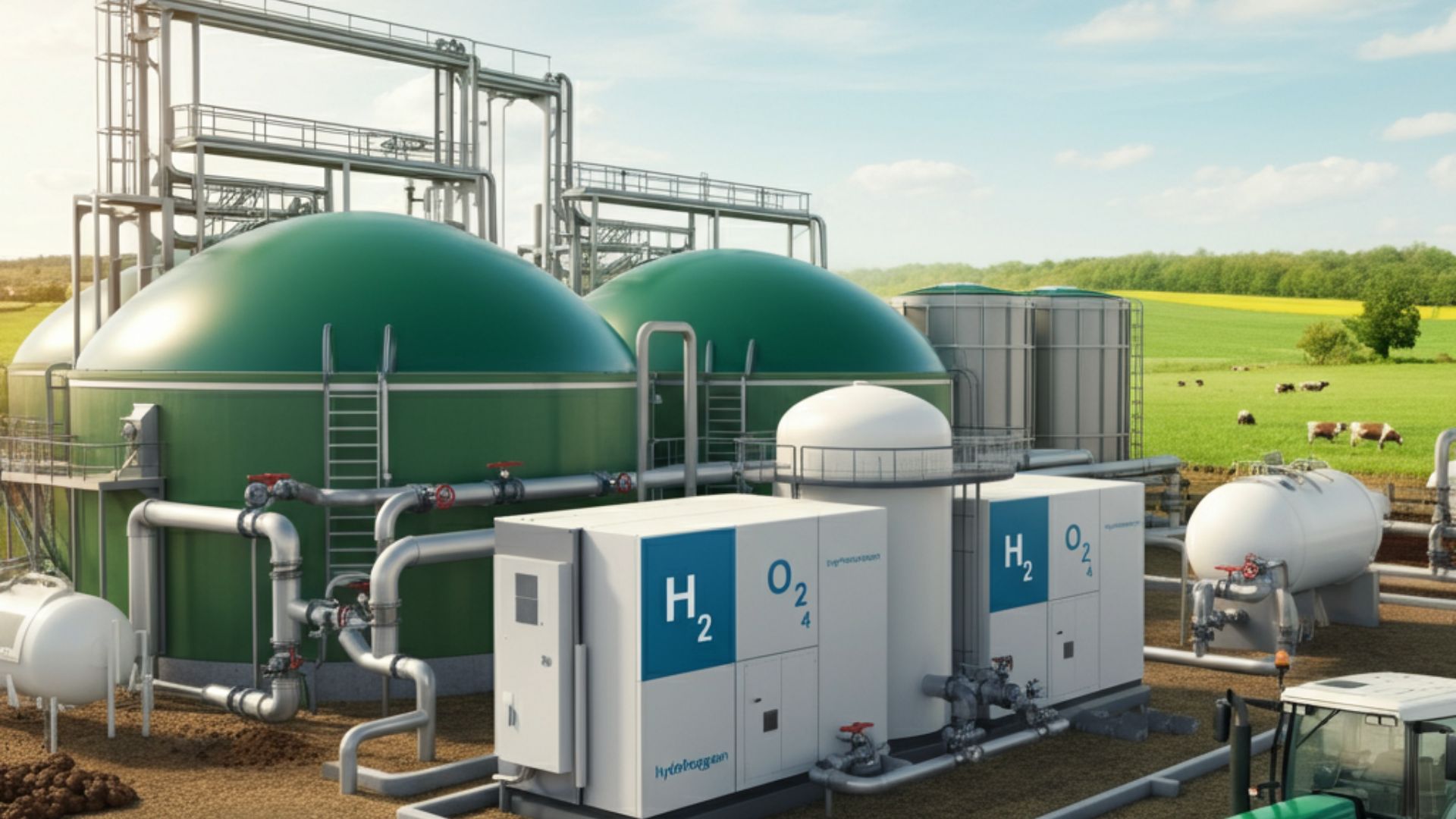
Manure to Hydrogen? These Companies Are Turning Waste Into Energy Gold
March 15, 2025Redefining Waste: Converting Cow Manure into Hydrogen
Modern advancements in renewable energy are showing us how waste can be a resource. One innovative area of focus is turning cow manure into hydrogen fuel, an approach that combines waste management with clean energy production. This process not only addresses agricultural emissions but also provides a sustainable energy source that can power vehicles, machinery, and entire communities. Companies and towns across the globe are leading this charge, transforming livestock waste into hydrogen using cutting-edge technologies.
Why Manure-to-Hydrogen Conversion Matters
Cow manure emits large amounts of methane, a potent greenhouse gas that has a significant impact on climate change. Utilizing this manure to produce hydrogen fuel serves a dual purpose. First, it lowers methane emissions by capturing the gas during processing. Second, it creates a clean, efficient energy source that produces zero harmful emissions when used. The ability to turn an environmentally harmful byproduct into renewable fuel highlights the immense potential of this technology.
Hydrogen is a versatile energy carrier that holds particular promise in areas like heavy-duty transportation, industrial heating, and energy storage. By utilizing manure, a widely available agricultural byproduct, the production of hydrogen can be localized, reducing the need for centralized fossil fuel-based production systems. This approach also represents an important step toward achieving global emission reduction targets.
Key Technologies Driving the Manure-to-Hydrogen Transition
1. Modern Electron (USA): Methane Pyrolysis
Seattle-based Modern Electron is at the forefront of methane pyrolysis technology, which involves splitting methane molecules into hydrogen and solid carbon. Working with Qualco Energy and the Tulalip Tribes at a biodigester facility in Washington, Modern Electron processes 60,000 gallons of manure daily to produce natural gas. Their new pilot plant, operational since early 2023, upgrades the process by converting methane gas into hydrogen fuel.
Methane pyrolysis is an energy-intensive process but has notable benefits. For example, the byproduct of this technology, solid carbon, can be used as fertilizer, ensuring minimal waste while sustainably supporting agriculture. Modern Electron is also leveraging existing natural gas infrastructure to streamline distribution, aiming to make manure-to-hydrogen conversion economically viable on a larger scale.
2. Graforce (Germany): Plasma Electrolysis
German company Graforce takes a different approach with its plasma electrolysis system. This technology uses high-energy plasma to convert methane in manure into green hydrogen. Plasma electrolysis eliminates the need for high-temperature reforming processes, making it energy-efficient. Graforce estimates that this approach could cover up to half of the world’s annual energy demand while significantly reducing global CO2 emissions.
What’s notable about Graforce’s solution is its scalability. It is designed for deployment in agricultural regions, leveraging widely available livestock waste. This makes it a promising technology for decentralized and community-driven hydrogen production projects.
3. Shikaoi Town, Japan: Biogas-to-Hydrogen Conversion
Shikaoi Town in Hokkaido, Japan, is a real-world success story of how manure-to-hydrogen systems can benefit local economies while advancing sustainability. Over 17 years, Shikaoi has developed a cutting-edge biogas production facility that handles manure from 21,000 dairy cows. The process ferments manure to produce methane, which is refined and converted into hydrogen.
The hydrogen produced is used to fuel local fuel-cell vehicles (FCVs) through Japan’s only station providing hydrogen derived from livestock manure. Beyond fuel production, the facility also channels surplus heat generated during the process into agricultural and aquacultural applications, such as growing high-value crops and farming sturgeon for caviar.
How These Technologies Could Reshape the Hydrogen Sector
The advances in manure-to-hydrogen technologies exemplify a shift toward cleaner, decentralized energy systems. Each of these methods offers unique benefits that could reshape the hydrogen industry:
-
Economic Viability:
By leveraging agricultural waste and existing natural gas infrastructure, these systems can lower the costs traditionally associated with green hydrogen, making it more accessible to rural and farming communities. -
Local Energy Independence:
Instead of relying on large-scale hydrogen plants, local systems like those in Shikaoi demonstrate that manure-to-hydrogen technologies can provide independent, renewable energy sources for communities and industries. -
Circular Economy:
By turning waste into energy and usable byproducts like solid carbon or compost, these methods align with the principles of a circular economy. This integrated approach maximizes resource utilization and reduces environmental burdens. -
Scaling Applications:
These technologies can be particularly impactful in agricultural regions, where farms can become self-sustaining energy providers for equipment, transportation, and even residential power.
Why Convert Natural Gas to Hydrogen: Key Benefits Explained
That’s a great question! Using natural gas directly as a fuel is indeed an option, but converting it into hydrogen offers several unique advantages, especially when considering long-term sustainability and environmental goals. Here’s why:
1. Cleaner Emissions
- When natural gas is burned, it releases carbon dioxide (CO2), a greenhouse gas that contributes to climate change. In contrast, hydrogen combustion produces only water vapor as a byproduct, making it a zero-emission fuel at the point of use.
- By converting natural gas into hydrogen and capturing the carbon byproduct (as solid carbon or through carbon capture technologies), the overall environmental impact is significantly reduced.
2. Versatility of Hydrogen
- Hydrogen is a highly versatile energy carrier. It can be used in fuel cells to generate electricity, power vehicles, and even provide heat for industrial processes. This flexibility makes it a key player in decarbonizing sectors that are hard to electrify, such as heavy transportation and manufacturing.
- Natural gas, on the other hand, is primarily used for heating and electricity generation, limiting its applications compared to hydrogen.
3. Energy Storage Potential
- Hydrogen can be stored for long periods and transported over long distances, making it an excellent option for balancing energy supply and demand. This is particularly useful for integrating renewable energy sources like wind and solar, which are intermittent by nature.
- Natural gas storage and transport are also possible, but they don’t offer the same potential for decarbonization.
4. Decarbonizing Transportation
- Hydrogen is essential for fuel-cell vehicles (FCVs), which are a cleaner alternative to internal combustion engines. While natural gas vehicles exist, they still emit CO2, whereas hydrogen-powered vehicles produce no harmful emissions.
5. Future-Proofing Energy Systems
- As the world moves toward stricter carbon reduction targets, hydrogen is seen as a more sustainable long-term solution. Investing in hydrogen infrastructure now helps prepare for a future where fossil fuels like natural gas may no longer be viable due to environmental regulations.
6. Utilizing Byproducts
- Technologies like methane pyrolysis not only produce hydrogen but also generate solid carbon as a byproduct, which can be used in various industries (e.g., as a soil additive or in manufacturing). This creates a circular economy where waste is minimized.
Challenges to Consider
- Converting natural gas to hydrogen does require energy, which can make the process less efficient compared to using natural gas directly. However, advancements in technologies like methane pyrolysis and plasma electrolysis are improving efficiency and reducing costs.
- The success of hydrogen depends on the availability of infrastructure, such as hydrogen refueling stations and pipelines, which are still under development in many regions.
In summary, while natural gas is a valuable energy source, converting it into hydrogen aligns better with global goals for reducing emissions and transitioning to a cleaner, more sustainable energy future. Hydrogen’s versatility, clean-burning nature, and potential for decarbonizing multiple sectors make it a compelling choice despite the additional processing required.
Applying These Technologies Today and Beyond
The technologies being pioneered by Modern Electron, Graforce, and Shikaoi Town represent practical solutions that can be implemented today with the right support. For example, farms with existing biodigester systems could adopt similar methane-to-hydrogen upgrades, potentially turning them into energy hubs for local communities.
Governments and private stakeholders can accelerate adoption by funding research, infrastructure, and pilot projects. Hydrogen refueling stations like the one in Shikaoi Town are vital for enabling clean-energy transportation, proving that even small towns can lead the way in decarbonization efforts.
Looking ahead, these technologies promise a significant global impact if scaled correctly. Agricultural economies in North America, Europe, and Asia stand to benefit the most, turning livestock waste into a renewable energy solution that advances environmental and energy goals. While challenges like cost and efficiency remain, the work being done today lays a strong foundation for cleaner, more resilient energy systems in the future.



 With over 15 years of reporting hydrogen news, we are your premier source for the latest updates and insights in hydrogen and renewable energy.
With over 15 years of reporting hydrogen news, we are your premier source for the latest updates and insights in hydrogen and renewable energy.